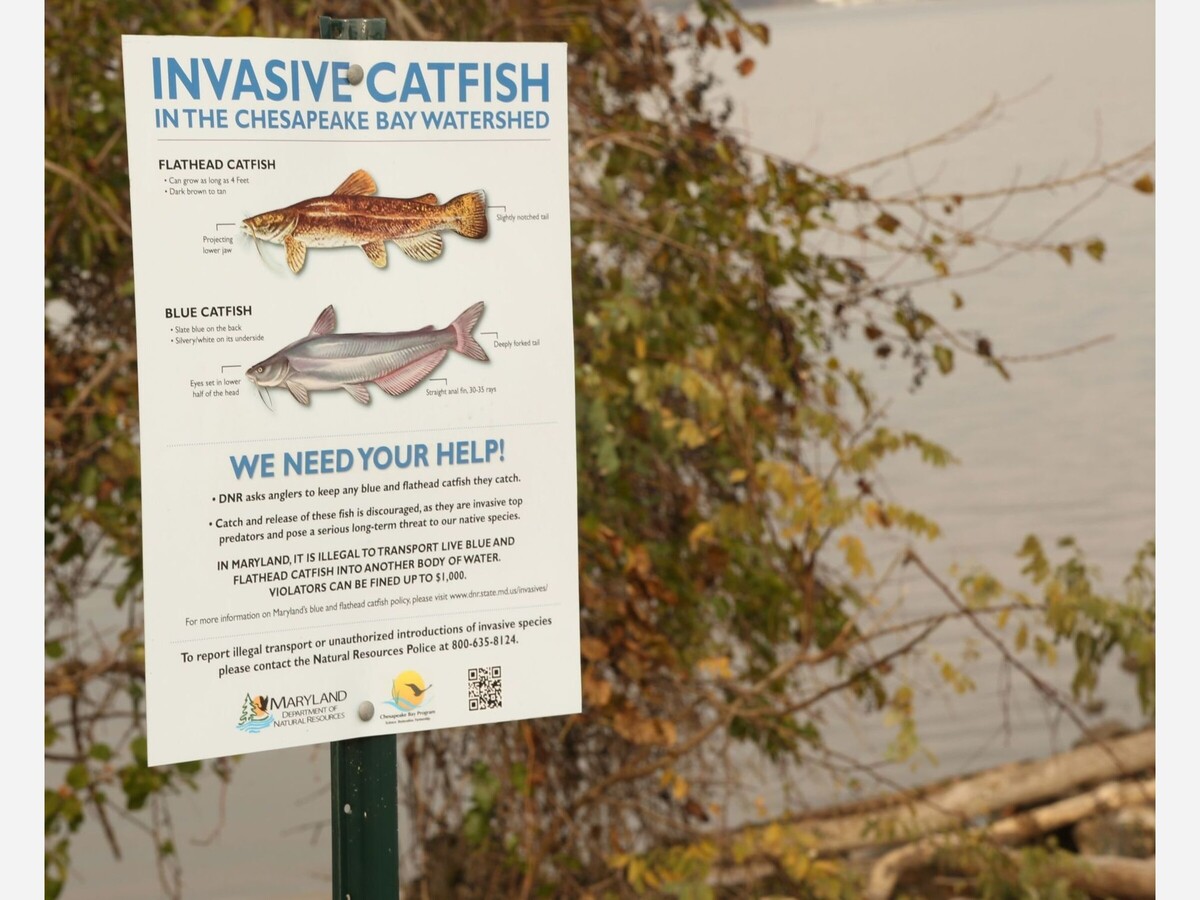Image

Blue Catfish Invasion Sweeps Chesapeake Bay, Sparks Angler Interest
The Maryland Department of Natural Resources is urging fishermen to catch as many blue catfish as possible and remove them from the water.
Initially introduced in the 1970s as a recreational fishing target species in Virginia, blue catfish populations have exploded in Maryland waters, turning them into a prime destination for anglers. State environmental officials say the more they are caught, the better. According to DNR, studies have shown that blue catfish are voracious predators, consuming significant quantities of native species such as white perch and blue crabs, thereby disrupting the delicate ecosystem.
“Maryland’s recreational anglers have done a great job of drawing attention to fishing for invasive species,” said Branson Williams, invasive fishes program manager for the Maryland Department of Natural Resources. “Targeting these fish in a tournament-based setting can incentivize anglers, remove large quantities of blue catfish at once, and support researchers as they study the health of the ecosystem. Maryland anglers are lucky to have these competitive fishing opportunities, which have low barriers to entry and can even educate new anglers on tactics and methods for catching catfish and northern snakehead.”
Here are some upcoming Maryland tournaments and events featuring blue catfish and other invasive species:
Wicomico Invasive Fishing Tournament (April 20, 2024)
Wicomico Environmental Trust is a nonprofit working towards the environmental health of Wicomico County and the Chesapeake Bay. Their tournament – which is free for children – also features live music and a food truck on site at the Riverside Boat Ramp in Salisbury.
Nanticoke River Invasive Fishing Derby (Date TBD)
Salisbury University’s Dr. Noah Bressman has organized a research-based tournament of his own, now in its third year. The tournament in Cherry Beach Park in Sharptown features over $2,000 in prizes, while a portion of all blue catfish and northern snakeheads caught will be analyzed in Bressman’s lab to study their effects on the local ecosystem. Weigh-ins are followed by awards and a free catfish cookout, where anglers can reap the rewards of their catch. A date has not yet been set for the Nanticoke River Tournament.
Great Chesapeake Invasive Count (April 1, 2024 – March 31, 2025)
Coastal Conservation Association Maryland hosts this research-backed tournament which is free to enter and runs from April 1 to March 31, 2025. Anglers compete for monthly prizes and log catches through a mobile app where you can input total length, weight, and even stomach contents.
These tournaments not only offer competitive opportunities but also contribute to the conservation of Maryland's waters by targeting invasive species. Anglers of all ages and skill levels are encouraged to participate in these events, promoting a healthier ecosystem while enjoying the thrill of angling.
Invasive Fish

Loss of biodiversity, Altered aquatic food webs, Reduced water quality
Reduced public safety and health, Decline in fisheries and habitat
Damage to infrastructure, and Loss of tourism and recreation
View the Invasive Story Map Report Catching a Northern Snakehead, Blue Catfish or a Flathead Catfish
using Maryland's Invasive Species Tracker

Snakehead can be identified by their protruding lower jaw and sharp teeth. Their long single dorsal fin and long anal fins are composed of soft rays. Their skin markings contain dark irregular blotches along both sides. The also have a truncate (not rounded) tail. In most regions, northern snakeheads grow up to 3 feet in total length.
As of October 4, 2002 it became a federal violation of the Lacey Act to import live snakehead fishes or viable eggs without a permit (Federal Register, 2002).
Northern snakeheads are able to breath air. Breathing air aids its ability to live out of water for prolonged periods of time. The northern snakehead can survive out of water in harsh conditions such as mud or in water with little oxygen as long as it remains moist.
More information about the Northern snakehead catfish can be found on the Snakehead Page.
Top↑

Flathead differ greatly in appearance from most other catfish species. Flatheads have a squarish tail, sometimes slightly notched. Their backs and sides are often an olive or light brown color with darker mottles or specks. Their bellies are often white or pale in color. Their heads are compressed, or flattened, and they have a protruding lower jaw. Flathead catfish can reach sizes in excess of 100 pounds but much smaller specimens have been encountered in the Chesapeake Bay region.
Flathead are an introduced species and are currently found in only a few places in the Chesapeake Bay; the Potomac River, Upper Bay, Elk and Sassafras Rivers.
More information about the flathead catfish can be found on the Flathead Catfish Page.
Top↑

Blue Catfish are long and often slender with a deeply forked tail. A distinguishing feature of the blue catfish is that the anal fin margin, or edge, is straight as if it has been clipped with scissors. All other catfish species have rounded anal fins.
Blue catfish are typically a bluish, gray color on top with a silvery or white underside. They are the largest of the catfish family in North America and can attain weights in excess of 100 pounds. The Maryland state record blue catfish is 84 pounds.
As an introduced species, blue catfish are now commonly found in the tidal Potomac River and some of the other tributaries of the Chesapeake Bay. Studies are currently underway to determine their impact on other aquatic species.
More information about the blue catfish can be found on the Blue Catfish Page.